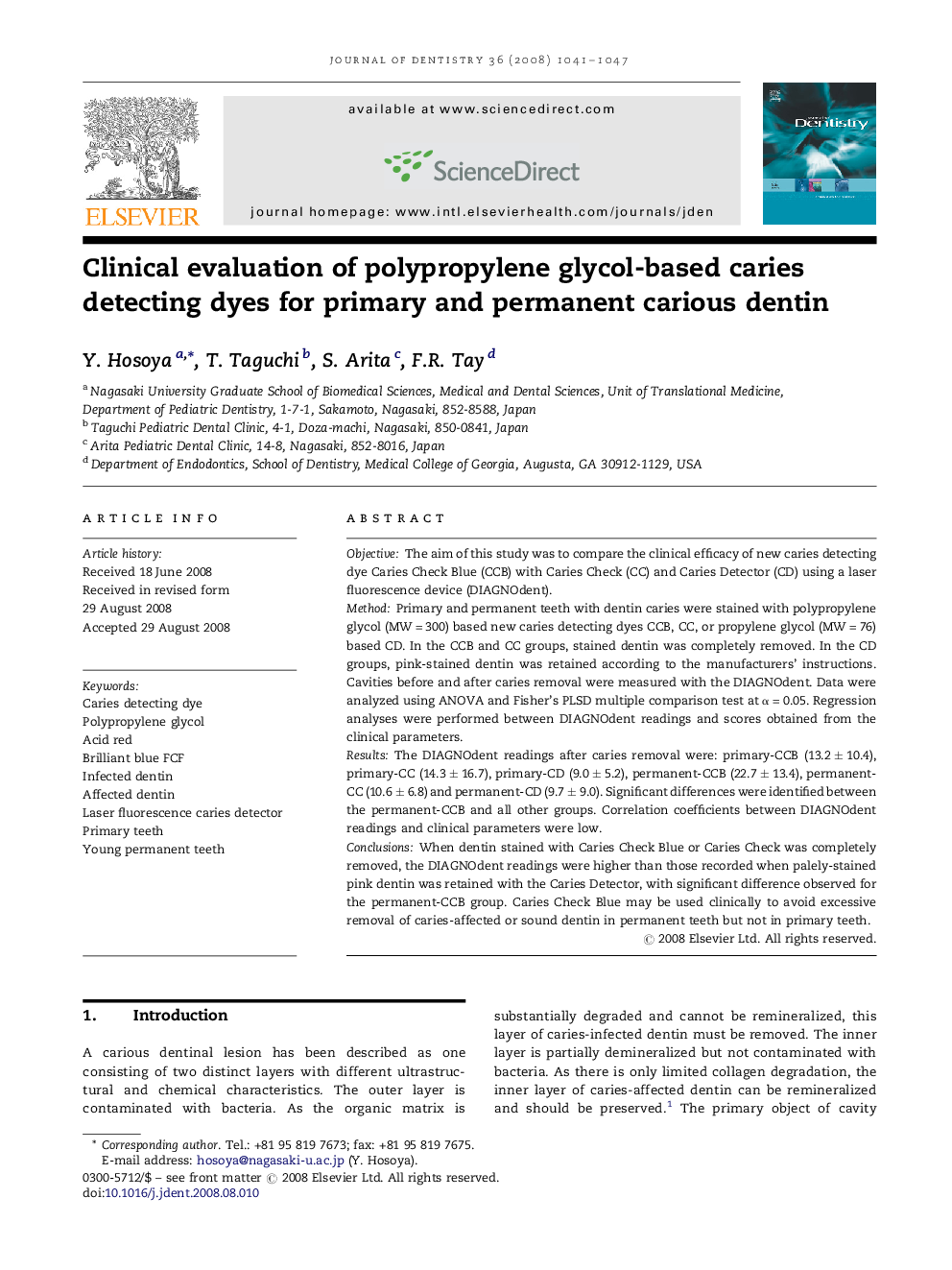| Article ID | Journal | Published Year | Pages | File Type |
|---|---|---|---|---|
| 3146384 | Journal of Dentistry | 2008 | 7 Pages |
ObjectiveThe aim of this study was to compare the clinical efficacy of new caries detecting dye Caries Check Blue (CCB) with Caries Check (CC) and Caries Detector (CD) using a laser fluorescence device (DIAGNOdent).MethodPrimary and permanent teeth with dentin caries were stained with polypropylene glycol (MW = 300) based new caries detecting dyes CCB, CC, or propylene glycol (MW = 76) based CD. In the CCB and CC groups, stained dentin was completely removed. In the CD groups, pink-stained dentin was retained according to the manufacturers’ instructions. Cavities before and after caries removal were measured with the DIAGNOdent. Data were analyzed using ANOVA and Fisher’s PLSD multiple comparison test at α = 0.05. Regression analyses were performed between DIAGNOdent readings and scores obtained from the clinical parameters.ResultsThe DIAGNOdent readings after caries removal were: primary-CCB (13.2 ± 10.4), primary-CC (14.3 ± 16.7), primary-CD (9.0 ± 5.2), permanent-CCB (22.7 ± 13.4), permanent-CC (10.6 ± 6.8) and permanent-CD (9.7 ± 9.0). Significant differences were identified between the permanent-CCB and all other groups. Correlation coefficients between DIAGNOdent readings and clinical parameters were low.ConclusionsWhen dentin stained with Caries Check Blue or Caries Check was completely removed, the DIAGNOdent readings were higher than those recorded when palely-stained pink dentin was retained with the Caries Detector, with significant difference observed for the permanent-CCB group. Caries Check Blue may be used clinically to avoid excessive removal of caries-affected or sound dentin in permanent teeth but not in primary teeth.
